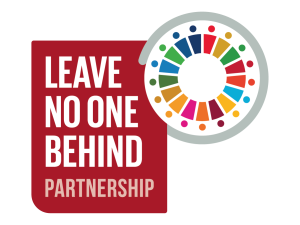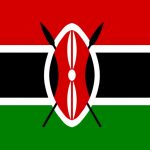This article is the second in a blog series that provides guidance on the use of community data. The previous article focused on using personal and community data safely. This article shares case studies to highlight examples of where community data is already being used effectively. It also looks ahead, considering the challenges and hopes for the use of community data to create a more equitable and inclusive world.
What is community data?
‘Community data’, or community-driven data, is data about communities that helps to bring their specific needs into focus. One of its key characteristics is its emphasis on the active participation of grassroots organisations in both the identification of information gaps and the collection of the data.
How is community data collected?
The methods that are used to collect the data vary widely. They can include questionnaire surveys, taking measurements (e.g. environmental monitoring), incident reporting, community mapping, desk research, workshops and interviews, plus other techniques such as photovoice.
Why is community data useful
There are many examples of where the collection of community data has led to an increase in the visibility and strength of voice of economically, politically and socially marginalised or dispossessed groups of people. It can therefore bolster the toolkit of those committed to achieving the leave no one behind agenda.
Decision- and policy-makers (e.g. community groups, governments, CSOs and donors) benefit from the much-needed insights that community data produces. And, in turn, the policies, projects and services that they provide for such groups can produce better results. The advocacy and communication campaigns that they run can be informed by and portray more meaningful content, while the programmes of research and monitoring that they undertake can be more accurately guided.
Case studies: Where community data is being used to leave no one behind
International networks to make voices heard and count
The Leave No One Behind Partnership was launched in 2017 by 12 ICSOs.One year later it had founded the Making Voices Heard and Count Project.
National coalitions in Bangladesh, India, Kenya, Nepal and Vietnam were established as part of the project – consisting of CSOs, civic networks and platforms, as well as community-based and community-led organisations. In collaboration with over 2,000 community representatives, the five coalitions then completed a pilot phase of collecting and using community data.
From these ongoing efforts, members of marginalised communities are able to play a meaningful role in informing local planning and holding authorities to account.
“The project fosters an inclusive model of SDG monitoring, supporting the collection, analysis and dissemination of community-driven data and giving a stage to data produced by the local target groups themselves – helping to make their voices heard and count”. – International Civil Society Center
International efforts to include indigenous peoples
The Indigenous Navigator Platform is a framework and set of tools that was developed by indigenous peoples for “indigenous organisations and communities, duty bearers, CSOs and journalists” to use. The purpose of it is to facilitate data collection, specifically tracking the “level of recognition and implementation of [indigenous peoples’] rights” and to make “implementation gaps visible”.
“By documenting and reporting their own situations, Indigenous Peoples can enhance their access to justice and development and help document the situation of Indigenous people globally”. – The Indigenous Navigator
The resources that the platform provides are multi-purpose. The sets of standardised indicators make comparison across sectors, communities, countries and continents possible, and enable longitudinal comparison over time. And, the platform also allows users to make their own additions and adjustments to the tools to suit their particular needs.
‘Snapshots’ of marginalised communities in India
The 100 Hotspots initiative is led by Wada Na Todo Abhiyan (WNTA). It is an ongoing series of studies (or, in the words of WNTA, “snapshots”) that aim to amplify the narratives of vulnerable communities, and increase policy-makers’ focus on such groups. The studies are participatory as members of the communities co-design and implement them. They tend to make use of a mixture of surveys, focus group discussions and institutional observations to collect the data.
“Our work so far unanimously establishes the need for listening to the marginalised voices and building solutions from the ground up in order to fulfill the Sustainable Development Goals agenda of Leave No One Behind”. – WNTA
The ‘Snapshot of Vulnerable & Excluded Urban Population Groups and SDGs in India’ is an example of a piece of work carried out under the 100 Hotspots banner. The study was designed to “support urban poor communities and CSOs the civil society organisations working with these groups”. It does this primarily by providing domestic workers, sewage workers, construction workers and people living in slums or without homes with material for advocacy work.
Looking ahead to delivering the Agenda 2030 pledge
Challenges to overcome
In July 2020, the International Institute for Sustainable Development hosted an online forum that focused on using community data to leave no one behind. The participants in attendance represented a range of development actors and stakeholders, including WNTA, Voluntary Services Overseas Nepal and the Danish Institute for Human Rights.
In a discussion highlighting the obstacles that prevent community data from being used more widely, participants identified among other challenges the lack of collaboration between government and civil society, a sceptical stance of many statisticians towards the validity of the data and the need for communities to develop skills to conduct research and generate data.
Reasons to be hopeful
In spite of these justifiable concerns, there are reasons to be optimistic about the future of community data. The upswing in attention and activity bodes well for the general quality of the data being collected. In turn, this should contribute towards the softening of the skepticism held in some quarters and thus encourage more collaborations. If these trends do play out they could mark a turning point in the political economy of established data systems, towards the meaningful inclusion of the interests of groups that are currently underrepresented or altogether excluded.
The three examples outlined show that progress is possible, and that it can happen relatively quickly. It will happen even more quickly if more of us get on board with the idea of using community data to make change.
Further reading
Indigenous World, The Indigenous Navigator: Self-Determined Development(accessed 3 December 2020).
International Institute for Environment and Development, 2017. Community-driven data collection in informal settlements.
International Institute for Sustainable Development, HLPF Side Event Explores Role of Community-driven Data for Leaving No One Behind,(accessed 9 December 2020).
Royal Government of Cambodia, IDPoor Process,(accessed 3 December 2020). IDPoor is the Royal Government of Cambodia’s “standard tool for targeting pro-poor measures in the country” and provides an example of a working relationship between community-driven and official data.
Wada Na Todo Abhiyan, Hotspots,(accessed 9 December 2020).








